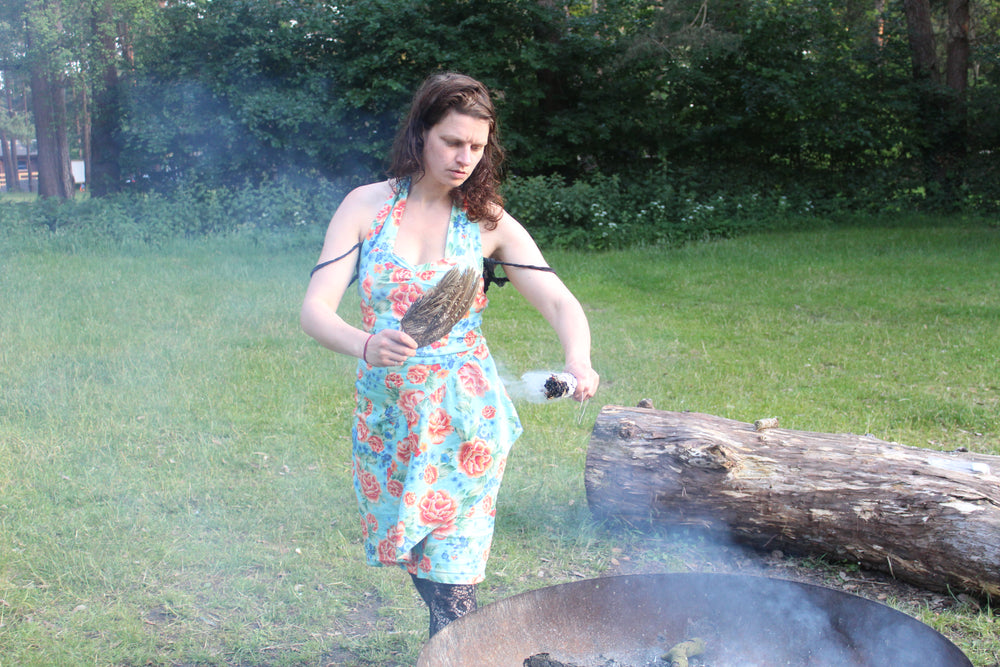I have watched the aromatherapy market grow for more than twenty years and as a clinical aromatherapist and shaman, I am always struck by two things.
The market-led exotic value placed on oils such as Frankincense and Myrrh and more recently CBD, as though no other oil will do the same job. Some oils become bestowed with a reputation and expectation that isn’t deserved or helpful considering the abundance of species. It is entwined in the ‘more is better’ and ‘the next big thing’ model of capitalism and I hope that in my practice I can navigate my work beyond this to a deeper connection with the people and the land and a sense of ‘enoughness’ as we enter into a previously unimaginable environmental circumstance.
The other thing that strikes me is the air miles travelled by oils. I have a sense that we have overlooked our native plants for those found on distant shores. Is this connected globally with a ‘falling out of love’ with ourselves, our Mother, the Earth? If this is the case, the next phase of our development as a species could be about healing that connection.
As a nation, our landscape has been shaped by pastoral farming, fields divided by government grants. Our shamen, or our witches were burned and their connection with the land whitewashed in our history. Yet I believe each land should be sovereign to its own resources and therefore its land.
It was this thought that made me reconsider the essential oils and hydrolats I use. Around two years ago, I started distilling nettles, Bay and Rosemary from the garden and I realised just how powerful it was to connect with our own gardens. I use the nettle hydrolat for a pain relieving blend with aloe to add essential oils to, I also made a soothing gel for my children’s skin and an after sun lotion blended with yarrow essential oil. For my shamanic work, I made protection blends with the fire element of bay and release blends with the water element of willow. I felt immediately more connected, able to communicate my intentions to the plants and feel the magic in the bottles.
In clinical aromatherapy, we work with chemistry but also properties. In shamanic practice, the herbs of the land are there to support the people. So in my aromatherapy practice, I wanted to ask the question: What plants are we overlooking in favour of oils and hydrolats with more prestige? These are the plants I am currently journeying into, working out their role on such a bigger level than our human minds can imagine.
Dandelion (Tarazacum officinale)
Red Clover (Trifolium pratense)
Burdock (Artium lappa)
Bladderwrack (Fucus vesiculosis)
Hawthorn (Crataegus spp.)
Stinging Nettle (Urtica dioica)
Willow (Salix alba)
Elder (Sambucus nigra)
My intention is to continue this research at home. This is in part, to carry out laboratory testing for the true properties and also to bring more connection to the land I was born in. The second part of this is education, sharing it, bringing more awareness to the ways that the wild weeds of this wonderful island can be brought into the healing room.
The wider aspect is the market. The aromatherapy market is set to expand. Species such as Cedarwood and Rosewood are both on the IUCN Red List along with 6 different species of Sandalwood including Santalum album. Ethical companies such as Penny Price Aromatherapy have also brought this to the attention of their customers in marketing by offering alternatives.
It is through widening markets and perception that we can bring more of a model of localisation to the global aromatherapy market. In my clinical practice and research, I would like to question the popularity of certain oils over others and bring awareness of the source and ethical growing of the oil as important to the energy of the plant and healing capacity.
I was fascinated, for example to learn that the chemistry of High Altitude Lavender grown in France (Lavandula angustifolia) was of a higher proportion of esters which are beneficial to burns whereas English Lavender is much higher in alcohols which are beneficial to coughs and colds. Nature adapts to our needs.
I hope I will discover a way to tune into our needs and the needs of our local area to see the Aromatherapy market grow in a way which is beneficial to the land, biodiversity and local economies if we are to respond to the changing climate and health needs in the decades and centuries to come.
Emily Webster
Clinical Aromatherapist
Plant Spirit Shaman
References
https://airmidinstitute.org/conservation/atlas-cedarwood-cedrus-atlantica-essential-oil-exploring-alternatives/ (Ablard, Dr K. A, 2017)
